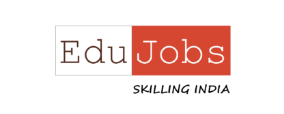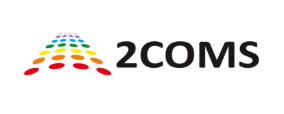Taking a leaf from the leading companies and economies of the world lets us understand diversity dynamics by addressing its relevance in the workplace.
According to a recent survey by the Pew Research Centre, the most advanced global economies endorse the inclusiveness of people from different backgrounds because of their positive impact on the economy and society. Living in an echo chamber is a huge disservice to the individual, society, and the country, damaging a company and society in the long run. A progressive organisation believes in embracing diversity in the workplace.
In the rapidly changing world that we are an intrinsic part of, diversity inclusion is not merely an option but has become a necessity. Taking a leaf from the leading companies and economies of the world lets us understand diversity dynamics by addressing its relevance in the workplace.
The Basics of Workplace Diversity
Continuing from the endorsement of the majority of some of the most advanced economies, who make a strong point by stating that diversity and inclusion have made the social structure and lives better. Post the pandemic, and the general global trend seems to have collectively shifted to being more open and inclusive. Another survey by the Pew Research Centre reveals that by 2055, the U.S. will not have a single racial or ethnic majority. The changing trends are and will impact the working environment and the social.
So, what exactly is diversity in the workplace, and what does managing diversity mean?
The varied differences between individuals in an organisation in terms of views, opinions, race, gender, sexual orientation, religion, ethnicity, mental and physical conditions, and more. Anything perceived to be distinctly different falls under the umbrella called "diversity." Where in one place, people are opening up to and accepting differences amongst themselves. At the same time, as a species, we are becoming increasingly aware of the myriad differences. Expanding our vision, a harmonious and productive work environment requires managing diversity with care and wisdom.
The Need for Diversity and Inclusion
There are numerous benefits to having a diverse workplace. Benefits are essential for an organisation's growth and prosperity, more so in the highly competitive world of today.
-
Recruitment: Including diverse people will directly widen and increase the pool of applicants and qualifications. Companies that prefer to recruit within a closed circle often lose out on able-qualified applicants, leading to inadequate fulfilment of key roles, which increases recruitment costs and slows down the company's productivity and progress.
-
Diversity in the workplace brings versatile skills, which are important for business improvement and expansion by widening the reach locally, regionally, nationally, and internationally. The multi-ethnic and multi-lingual workforce has greater reach and opportunities for connectivity and networking.
-
A diverse workforce imbues the organisation with divergent perspectives, new creative ideas, and problem-solving suggestions and techniques influenced by their culture and experiences.
-
Deeper understanding: Every organisation works on a basic understanding of its target demographics. Diverse perspectives bring forth a deeper and better understanding of the market, which will add to the betterment and growth of the organisation.
-
Increases customer base: An inclusive organisation will not only have a broader market spectrum for its products and services but will also develop better connectivity with existing and prospective customers from diverse backgrounds.
-
Healthy environment: A nuanced diversity management of the workforce will also gain from each other by exchanging their experiences and views on various aspects of life, thus making their lives and minds more enriching and healthier. A harmonious workforce translates to a healthier organisation.
How to create and manage an inclusive work culture
The successful running of an organisation or business largely rests on its culture. Culture is determined and established by the owner(s) and carefully nurtured and spread among the staff. Culture plays a huge role in the building up of the image and reputation of a business. Deciding to have an inclusive work culture is not enough; determining the basic tenets, building them up, and maintaining them are equally important.
Follow these basic tips for creating and effectively managing an atmosphere of diversity and respect within your organisation.
Heterogeneous Environment:
The HR department often faces challenges in maintaining a harmonious atmosphere in the office and managing diversity. Promoting, encouraging, and enabling a culture of tolerance, mutual respect, open communication channels, and creating conflict management strategies is a concerted effort that can help mitigate these challenges.
Communication is the key:
Establish and maintain effective communication with the employees. Company policies, relevant laws, procedures, safety rules, etc., should be explained patiently and designed to be easily understandable by the diverse workforce. You can translate the important information and employ symbols and pictures wherever applicable.
Individualisation:
We are all the same but also unique. Remember this profound phrase and treat every employee as an individual instead of making assumptions or stereotyping them. Acknowledge their successes and failures individually and do not colour them with prejudice towards their background or ethnicity.
Encourage working and socialising in a variety of group:
Socialising helps employees know each other as individuals, erasing the misunderstandings and prejudices one might be carrying towards an ethnicity or cultural background. This approach is also a good way to become aware of different perspectives, working styles, and natures for personal growth.
Standardising rules:
Standards should be built on objective and practical criteria aligned with the company's vision and culture. Ensure all rules, actions, and discipline follow the standardised norms for the employees to be treated equally.
Acceptance:
An open-minded approach is necessary for the employees to accept, respect, and learn from each other's uniqueness as per their diverse cultures. Sticking to a righteous attitude regarding one's beliefs and practices can cause rifts and tension in the workplace.
Above all, relaying the common goal and emphasising it from time to time while making the staff understand the benefits of staying true to the common goal will further help with diversity management in the organisation.
Policies and Procedures
Ensuring that the policies and practices adopted by the organisation are well in place is essential for maintaining a diverse culture in the office. To expect adherence to the policies, the company should understand the impact or interpretation of the policies by the diverse work group. Asking for feedback or organising in-house meetings in an informal setting to discuss the policies will help the company formulate and streamline the policies. It is provided that the company is open to adapting and changing the policies to remove obscurity and obstructions for the employees instead of enforcing them.

Diversity and inclusion has been a board-level agenda in many companies in India but only 42% of surveyed companies have incorporated a written policy, according to the first D&I survey hosted by the India Diversity Forum this year. 93% of the companies mentioned they proactively promote hiring of women across different levels, by just about 44% have actually made at least 1/3rd of hires of women in the last three years. The gap between intent and action is alarming here.
A few salient points of the company policy to be included in the employee handbook:
∙ A code of conduct vis-a-vis diversity.
∙ Non-discrimination policy towards employees in a diverse environment.
∙ Policy on compensation and benefits
∙ Conditions for appointment and rumination
∙ Keep a zero-tolerance policy towards crudeness, jokes about gender, ethnicity, religion, or health limitations. A strict policy against bullying, slurring and shaming with the code of conduct and action against misconduct should be clearly stated.
∙ Define the Complaint Policy to define the procedure for filing complaints and grievances and reporting misconduct to proper authorities.
Sensitisation
Sensitising exercises and training sessions for the top management and staff are important for upholding and maintaining a diverse culture in the organisation. There are many benefits to the policy for sensitisation.
∙ Instils awareness and practice of self-examination, leading to self-improvement.
∙ Better appreciate others and diverse views.
∙ It makes them understand the impact of certain actions, perceptions, and attitudes on those they judge or find different.
∙ Establishes healthy communication channels to express and resolve issues amongst each other. Also, make the atmosphere amicable enough to apologise for the misbehaviour.
Sensitisation of the organisation helps establish a pleasant and harmonious environment, which encourages innovation, creativity and wider acceptance of ideas with their implementation as a team.
What’s next?
Once you have established the above points, it is time to conduct a litmus test for inclusivity to know how well you manage diversity in the workplace. You can take one of the many online quizzes based on this or create your test built on the following parameters:
∙ Criteria to gauge diversity
∙ Gender ratio, both within the workforce and among executives.
∙ Multi-ethnic representation in the workforce
∙ Employees' tenure with the company
∙ Openness to suggestions and changes
The world is coming together as one global community where borders are fading away fast with the internet connecting the far and near as one. This aspect automatically translates into an increase in both opportunities and competition. A company that embraces a diverse culture will have the edge over those running on conventional standpoints and methods.
For getting your hiring and placements on point, you can rely on 2Coms and get your recruitment requirements sorted. Contact us to know more at www.2coms.com today!



























